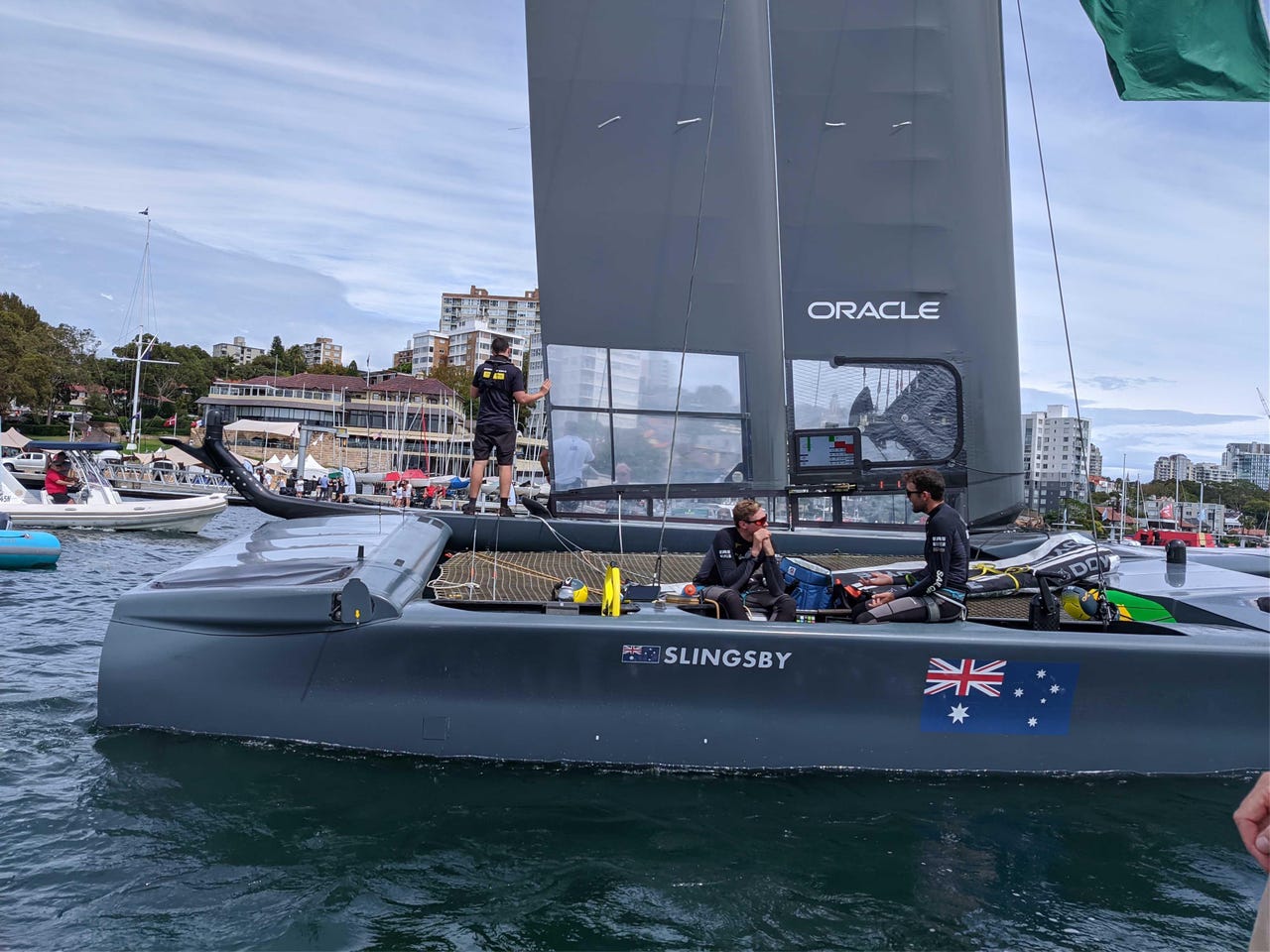How SailGP is using IoT and data to improve performance

The Australian SailGP team.
SailGP is an annual sailing competition where seven sailing teams use F50 catamarans -- boats with 24-metre wingsails that can fly above the water on hydrofoils -- across five three-day racing events. The races are all over the world, spanning from Sydney, Australia to Copenhagen, Denmark.
During SailGP's inaugural season that ran last year, these boats were able to reach up to 50 knots -- 92.6 kilometres per hour. For the upcoming season, five-time America's Cup champion and SailGP CEO Russell Coutts expects the top speed for these boats to rise to around 53-54 knots.
With reaction speed and tactical maneuvering being core to the sport, Coutts said it's really important to be able to track this information in order for viewers to understand the sport.
SailGP's director of technology Warren Jones told ZDNet that while the races are a great display of sailing skills, viewers need to understand what is going on, and be in a position to appreciate the athletes' skills.
To achieve this, SailGP's boats are equipped with three cameras and three sets of audio to record the real-time actions of the athletes. For the Sydney racing event, the initial collection point for the video and sound is a shipping container based in Lyne Park, Sydney, which then gets sent to a local staging area before it is moved into Oracle's cloud -- going through various replication points to mitigate against data loss. After this, the data is sent out to consumption points such as the SailGP app, umpires, the sail teams, as well as video broadcasters.
"We knew what we wanted onshore, but it was about getting from onshore to a database that gets out to the public or wherever," Jones said.
The data also runs through an artificial intelligence mechanism that can track the amount of time a logo appears on the screen, Jones said. This is critical, he explained, as the mechanism allows SailGP to get that information to the relevant stakeholders as fast as possible due to the race being shown on its own television production.
"Previously, we had to wait actually, in some cases, months to actually get that information accurately as crazy as that sounds. Now with this, getting that information instantaneously it's a huge benefit because we can then actually feed that back into the production team," Jones said.
In terms of the athletes themselves, each boat has over 400 IoT sensors that provide more than 12,000 data points -- including heart rates and blood pressure -- which gives a clearer picture on what areas of fitness they need to improve on.
With data that is personal in nature, such as medical data like heart rates and blood pressure, this is treated as a "separate entity" to other data, and is protected by passwords, Jones said.
The F50's steering wheel and IoT sensors
The technical information of the boats, meanwhile, is shared between teams to prevent a secret "arms race" of sorts to ensure that the outcomes of races are determined by skill and ability, as well as to lower the learning curve for new entrants into the competition.
"With the wingsail setup, for example, on one boat compared to another, you can control all the elements of the wind to twist it how you want and give it all different shapes and sizes -- one team will be using a different technique to what we'll be using so we can analyse what they're doing, and if we prefer that system or our system," said Kinley Fowler, flight controller and grinder of the Australian team.
"The learning process is so much faster; teams can analyse not only their performances, but also the performances of other teams, allowing them to see where the differences are in order to very quickly to improve," Jones said.
According to Fowler, during a practice race earlier this week, Spain was the best performer despite being a new entrant in the SailGP competition. Fowler attributed Spain's early success to the team having access to these data points.
These data points include boat speed, the various different dimensions regarding what the boat's body is doing, the direction the boat is going, the direction and speed of the wheel from various different points, the height of the boat out of the water, as well as how much time the boat is spending out of the water, among others, Scott Newman, senior director of Oracle Solutions Engineering, told ZDNet.
"The point is to give more data points to make the sport grow quicker," Fowler said.
The second season of SailGP kicks off on Friday in Sydney.
Related Coverage
Really useful tech for your smart home
Smart technology to enhance your smart home
Lifesize launches Rooms-as-a-Service effort to court video conferencing, meeting room customers
The Rooms-as-a-Service plan starts for $99 per room per month and is available in the U.S. and Europe.
FBI recommends that you keep your IoT devices on a separate network
The FBI also recommends changing factory-set (default) passwords and not allowing an IoT device's accompanying mobile app to gain access to too many smartphone permissions.
Microsoft Teams gains traction faster than expected, catches Plantronics flat footed
Plantronics outlook for the third quarter and fiscal year is well below expectations. Why? Enterprises are moving from Skype for Business to Microsoft Teams at a rapid clip and the unified communications vendor's product lineup is just catching up.
NASCAR's IoT streaming strategy speeds into new territory (TechRepublic)
NASCAR's chief digital officer explains how IoT and big data help racing fans have more ways to engage during the races, including the Daytona 500.
